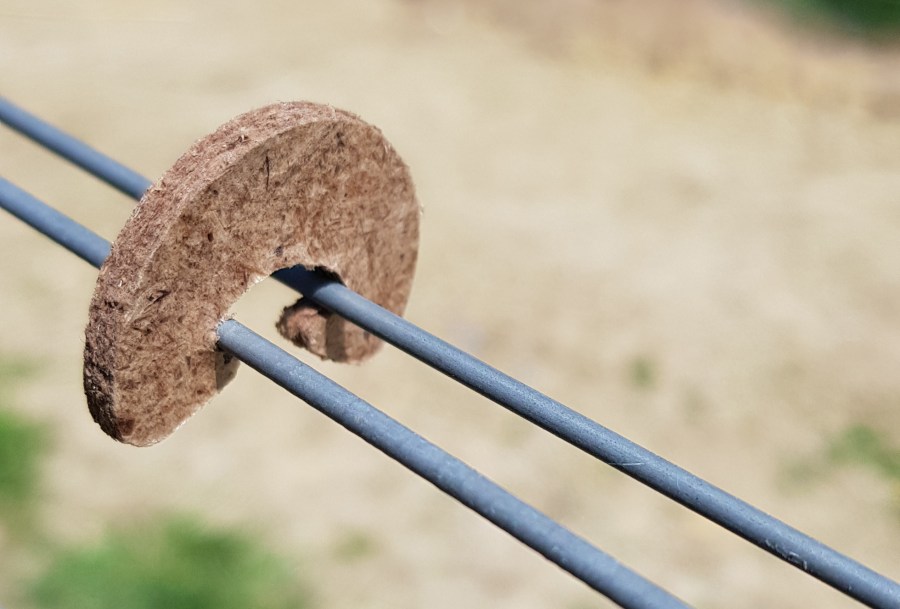Keeping your vineyard tidy, uniform and in the best condition ensures you afford your vines the most opportunities for growth and success. As we enter the summer season, there are myriad tasks to complete.
Vertical Shoot Positioning (VSP)
This method of training your canopy creates a designated fruit zone and encourages the vines to produce more fruit. Vines naturally want to branch out as far from their roots as possible and only produce fruit as a means to overcoming a disadvantageous locality – for the purpose of dispersing seeds via birds and other animals. Training via VSP creates a regular growth habit for the vines, aids vine health and keeps them producing grapes for the purpose we want – turning into wine!
A quick overview of how to create a VSP system: annual cane/cordon pruning; a trellis system that includes a fruiting wire; and two/three pairs of foliage wires
Bud-rubbing and shoot selection
The removal of unwanted shoots from the trunk, bud-rubbing is best done by hand to guarantee a thorough pass through the vineyard. Shoot selection requires selecting the correctly positioned shoots you wish to keep, rather than simply the strongest. A strong shoot doesn’t always equate to a strong bunch of grapes whereas positioning is vital for future pruning. Thinning the shoots also aids an aerated canopy, decreasing humidity and preventing disease.
Tucking in and wire lifting
Tucking in is a simple, but crucial process: simply lift up all the shoots and catch them between the foliage wires to create a hedge shape. The fruit will grow around the fourth and fifth buds so when you raise your first wire, lift it above the fruiting zone. Tuck in and lift as necessary throughout the season.
Securing canopy with foliage clips
Once your wires have been lifted, there will still be a little slack in the system which means your shoots may hang out and snag on passing machinery. This is counteracted by the use of ‘c’ shape foliage clips. We recommend that foliage clips are placed centrally between the vines in the trellis bay, but not adjacent to the end post. Some growers use two clips per bay on lower wires and three per bay on top wires. Allow a minimum of one clip per vine.
Leaf stripping
It may seem counter-intuitive to remove the vine’s ‘factory centres’, but a leaf takes a month before it helps provide for the vine, but it uses energy until it produces it. A leaf will only produce energy for approximately three months and then creates shade and humidity on your fruit. Removing the oldest leaves promotes aeration of the fruit, increases sun exposure, (which aids ripening) and helps spray penetration. Depending on your row orientation, you should leaf strip the east side first as the morning sun will dry the dew off the fruit.
Trimming
There are two options to consider: ‘tipping’ or ‘topping’. Tipping is the removal of just the growth tips which will stimulate more vigour whilst topping is the removal of approximately 30cm-50cm with the aim of reining in vigour. Which option you choose depends on the vineyard/block and you may do a mixture of both.
Mowing
This essential task is done for two main purposes: to remove excess vegetation in the vineyard alleyways which decreases the humidity in the first few feet above the ground, (grape level) and to reduce frost risk in Spring. In a maritime climate, the former is vital in combatting disease and the latter is very site-specific. Keeping grass short also reduces competition with the vines.
Undervine weeding
Excessive vegetation under the vines creates competition and is perhaps the worst perpetrator when it comes to humidity in the fruit zone. Various methods exist to combat this: mowing under the vines, herbicide sprays and cultivation. In a no-till system, the first two are viable options – sheep are less inclined to eat what we call weeds. Cultivation under the vines is a method of controlling weeds that involves disturbing the soil, which has the benefit of introducing oxygen to the soil, but a downside of releasing CO2 into the atmosphere. A combination of all three methods in rotation would be ideal for conventional control and tidiness while maintaining a regenerative farming approach to soil health.
If you thought there was a quiet time in the vineyard where you get to sit back and wait for the grapes to grow, this checklist should keep you busy throughout the summer months!
This story was taken from the latest issue of Vineyard. For more up-to-date and in-depth reports for winemakers and growers in Great Britain, read our latest issue here and subscribe here.




